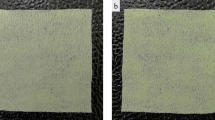Abstract
PURPOSE: The aim of this study was to investigate the possible deleterious effect of the lateral intersecting margins (so-called dog ears) on anastomotic disruption after experimentally performed double-stapled anastomoses. METHODS: Two groups of double-stapled side-to-end anastomoses were performed using pig small intestines. Group A consisted of 35 circular anastomoses and Group B of 32 double-stapled anastomoses with a bilateral dog ear. In both groups bursting pressures were tested using a water-filled, pressure-controlled automatic pumping system (Hamou Endomat®), and special attention was paid to the location(s) in the anastomoses were the disruption(s) occurred. RESULTS: In Group A bursting pressures were significantly higher than in Group B (median pressure, 90vs. 60 mmHg;P<0.001, Mann-WhitneyU test). Remarkably, in Group B in 13 cases (42 percent) the first disruption occurred at the corner of a dog ear. CONCLUSIONS: We conclude that the lateral intersections of double-stapled anastomoses are a structural weak spot and that the currently most often applied double-stapled anastomosis is a less effective type of anastomosis than a complete circular one. Resolving this technical problem might help to reduce the number of anastomotic disruptions after low anterior resections.
Similar content being viewed by others
References
Hansen O, Schwenk W, Hucke HP, Stock W. Colorectal stapled anastomoses: experiences and results. Dis Colon Rectum 1996;39:30–6.
Averbach AM, Chang D, Koslowe P, Sugarbaker PH. Anastomotic leak after double-stapled low colorectal resection. Dis Colon Rectum 1996;39:780–7.
Vignali A, Fazio VW, Lavery IC,et al. Factors associated with the occurrence of leaks in stapled rectal anastomoses: a review of 1,014 patients. J Am Coll Surg 1997;185:105–13.
Hamou J, Fryman R, McLucas B, Garry R. A uterine distension system to prevent fluid intravasation during hysteroscopic surgery. Gynaecol Endosc 1996;5:131–6.
Ravitch MM, Steichen FM. A stapling instrument for end to end inverting anastomosis in the gastrointestinal tract. Ann Surg 1979;189:791–7.
Knight CD, Griffen FD. An improved technique for the low anterior resection using the EEA stapler. Surgery 1980;88:710–4.
Moritz E, Achleitner D, Holbling N, Miller K, Speil T, Weber F. Singlevs. double stapling technique in colorectal surgery: a prospective randomized trial. Dis Colon Rectum 1991;34:495–7.
Fingerhut A, Hay JM, Elhadad A, Lacaine F, Flamant Y. Supraperitoneal colorectal anastomosis: hand-sewn versus circular staples—a controlled clinical trial. French Associations for Surgical Research. Surgery 1995;118:479–85.
McGinn FP, Gartell PC, Clifford PC, Brunton FJ. Staples or sutures for low colorectal anastomoses: a prospective randomised trial. Br J Surg 1985;72:603–5.
Memon AA, Marks CG. Stapled anastomoses in colorectal surgery: a prospective study. Eur J Surg 1996;162:805–10.
Redmond HP, Austin OM, Clery AP, Deasy JM. Safety of double-stapled anastomosis in low anterior resection. Br J Surg 1993;80:924–7.
Storer EH, Goldberg SM, Nivatvongs S. Colon, rectum and anus. In: Schwartz SI, Shires GT, Spencer FC, Storer EH, eds. Principles of surgery. 3rd ed. New York: McGraw-Hill, 1979;28:1191–256.
Author information
Authors and Affiliations
Additional information
Equipment supplied by Ethicon Endosurgery-Johnson & Johnson, the Netherlands.
About this article
Cite this article
Roumen, R.M.H., Rahusen, F.T.G., Wijnen, M.H.W.A. et al. “Dog ear” formation after double-stapled low anterior resection as a risk factor for anastomotic disruption. Dis Colon Rectum 43, 522–525 (2000). https://doi.org/10.1007/BF02237198
Issue Date:
DOI: https://doi.org/10.1007/BF02237198




